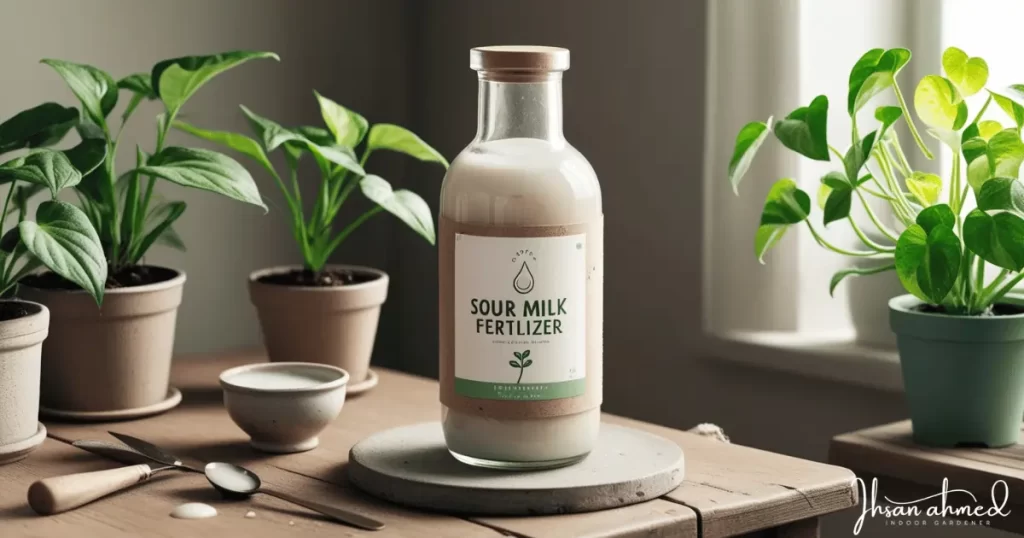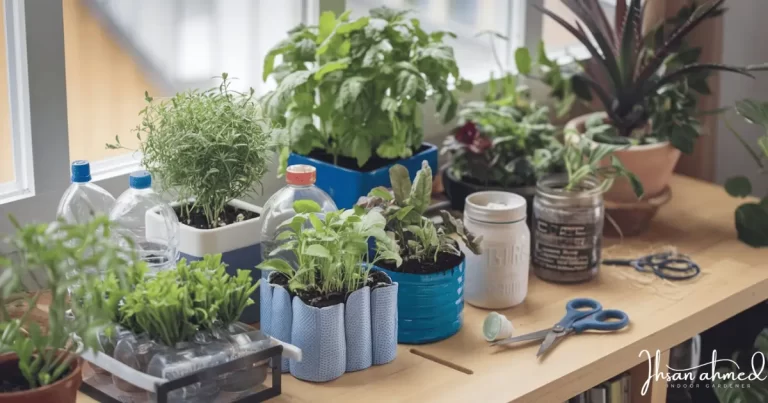How does kitchen scrap fertilizer reduce wastages?
- Reduce Wastes
- Improve Soil Health
- Cost Effective
- Boosts plant health
- Enrich Nutrients
1. Banana Peels

Banana peel fertilizer is simple and easy to make which is eco-friendly that can enrich your soil with nutrients.
Banana peel fertilizer contains
- Potassium (K)
- Phosphorus (P)
- Calcium (Ca)
- Magnesium (Mg)
- Sodium (Na)
- Nitrogen (N)
- Iron (Fe)
- Sulfur (S)
How to make Banana peel fertilizer in liquid form
Required Materials
- 2-3 banana peels
- container
- Strainer
- Water
Process
- Cut the banana peels into small pieces in a container
- Fill the container with water and leave it for 3 days
- Strain the mixture and use the liquid for watering the plants.
- Use the discarded peels in the compost bin for making compost fertilizer.
- Add Epsom salt, coffee grounds, and compost tea for extra nitrogen, magnesium, and sulfur that give balanced nutrients.
- Use once a week during the growing season.
2. Coffee Ground Tea

Coffee grounds give a boost to indoor gardening such as tomatoes, these fertilizers not only benefit your plants but also reduce kitchen waste.
Coffee ground fertilizers are rich in
- Nitrogen (N)
- Phosphorus (P)
- Potassium (K)
- Calcium (Ca)
- Magnesium (Mg)
- Iron (Fe)
- Zinc (Zn)
- Copper (Cu)
How to make Coffee ground fertilizer in liquid form
Required Materials
- Used Coffee grounds
- 5 Liters of Water
- Container
- Strainer
Process
- Place the container and add the used coffee ground from brewed coffee
- Add 5 liters of water stir well let it be cool for the next 2 days and keep in cool and shaded places.
- Use the strainer to remove the tea from the grounds.
- Grounds can used for composting
- Use the tea in a ratio of 1:1 with water to spray the plants.
- Use this spray once a week and avoid overusing it.
3. Eggshells

Eggshells are naturally rich in nutrients in soil made from crushed and powdered eggshells. It gives strength to plant walls and promotes root growth, especially in tomatoes and peppers.
Powdered eggshell fertilizers rich in nutrients like
- Calcium Carbonate (CaCO₃) (95%)
- Magnesium (Mg)
- Phosphorus (P)
- Potassium (K)
How to make eggshell fertilizers in powdered form
Required Materials
- Eggshells
- Blender or Grinder
- Baking Oven
- Container
Process
- Clean the eggshell and remove the residue.
- Place the eggshell on the baking tray at 350°F for 10 minutes and easier to grind.
- Use a blender or grinder and make a fine powder to crush the eggshell.
- Use this powder around the base of the plants to mix in the topsoil as well as compost.
4. Apple Cores

Instead of throwing apple cores consider adding them to gardening to make fertilizer as well as used in compost and apple core is a center part of an apple that is around the seeds.
Apple core tea fertilizers are rich in
- Potassium (K)
- Phosphorus (P)
- Nitrogen (N)
- Calcium (Ca)
- Magnesium (Mg)
How to make Apple core tea fertilizers in liquid form
Required Materials
- Apple core
- Container
- Blender or Grinder
- Water
Process
- Collect the apple cores, grind it, and place them in a large container
- Add water in a ratio of water 2 parts and apple core 1 part
- Allow 3-5 days and stir them daily to prevent anaerobic conditions
- Strain to separate the solid and use the solid for compost fertilizer.
- Use the liquid to water the plants.
5. Citrus Peels

Citrus peels are the outer skin of citrus fruits such as orange, lemon, limes, and grapefruits. Citrus peels act as a natural pest and fight against plant diseases.
Citrus Peel Tea fertilizers contain
- Potassium (K)
- Phosphorus (P)
- Nitrogen (N)
- Calcium (Ca)
- Magnesium (Mg)
- Organic acids
- Essential oils
- Fiber and natural sugar
How to make Citrus Peel Tea fertilizers in liquid form
Required Materials
- Citrus Peels
- Water
- Container
- Strainer
Process
- Save the peels, cut them into small pieces, and use the grinder to blend them to make quick extraction.
- Place these peels and fill the water in 2 parts water and 1 part peels
- Let them mix for 5 days and stir them daily
- Separate the liquid using a strainer and use it for plants
- Use the soil on compost to make soil fertilizer.
6. Potato Peels

Potato peels which are the outer skin of the potato which is rich in nutrients are often removed during food preparation. This kitchen waste is turned into fertilizer with easy simple steps which are essential for plant growth and improving soil fertility.
Potato Peel Tea contains
- Potassium (K)
- Phosphorus (P)
- Nitrogen (N)
- Calcium (Ca)
- Magnesium (Mg)
- Starch
- Natural sugar
How to make Potato Peel Tea fertilizers in liquid form
Required Materials;
- Potato Peels
- Boiling Equipment
- Container
- Strainer
- Water
Process
- Collect the potato peels which are free from oil
- Add 2 liters of water into a bowl and a handful of peels and boil for 10 minutes
- Allow the bowl to cool and separate the solid peels.
- Mix the liquid peels in a ratio of 1:1 ratio in water to water the plants.
7. Avocado Pits and Skins

Avocado pits are harder seeds and the skin is the toughest outer skin of avocado fruits, these parts, are considered wastes but they are rich in nutrients and sustainable for indoor gardening to boost the plant’s growth.
Avocado Powder Fertilizer contains
- Potassium (K)
- Calcium (Ca)
- Magnesium (Mg)
- Phosphorus (P)
- Iron (Fe)
- Natural Fibers
- Antioxidants
- Polyphenols
How to make Avocado Powder Fertilizer
Required Materials
- Avocado pits and skins
- Drying tray
- Hammer and knife
- grinder
Process
- Collect the avocado pits and skin
- Use a hammer and knife to make small pieces of the pits and skins.
- Keep the pits and skin in a drying tray for 2 weeks
- Bake at the low temperature of 175°F for 4 hours
- Use the grinder to make fine powder and use a strainer to filter the larger portions, either regrind or use it in compost.
- Mix with topsoil with 2 spoons of powder per plant is recommended.
- The ideal ratio is one part avocado powder and 9 parts topsoil
8. Used Tea Bags

Used tea bags are the easiest way to create organic fertilizer which benefits the plants and improves soil structure. It contains essential nutrients and helps to boost the gardening ecosystem.
Used tea Bags fertilizer contains
- Nitrogen (N)
- Phosphorus (P)
- Potassium (K)
- Magnesium (Mg)
- Tannins
- Calcium (Ca)
- Iron (Fe)
How to make used tea bags Fertilizer
Required Materials
- Used Teabags
- Container or bucket
- Water
- Stirring stick
- Strainer
Process
- Collect the used tea bags and remove the tags
- Place the container and put all the tea bags
- Fill the container with 2 gallons of water
- Keep them for 2 days and stir them often
- Use the strainer to separate the tea particles and use these particles in compost
- Use this liquid fertilizer in spray bottles to spray the plants
9. Sour Milk

Don’t waste the milk when it is spoiled or expired because it is a hidden gem for indoor gardeners. It is rich in calcium and beneficial bacteria, improves soil health, and boosts the plant’s growth to give multiple harvests.
Sour milk fertilizer contains
- Calcium (Ca)
- Nitrogen (N)
- Lactic Acid
- Proteins
- Amino Acids
- Beneficial Microbes
How to make sour milk Fertilizer
Required Materials
- Spoiled or expired milk
- Water
- Large container
- Stirring spoon
Process
- Leave out the milk from the fridge and let be there for 2 days
- Mix the milk with water in a ratio of 1 part sour milk and 3 parts water.
- Pour the milk into the container mix well and keep it idle for 15 minutes
- Filter it and use it for the plants.
10. Stale Bread

Stale bread is often considered waste it can be the old or outer cover of the bread. They are rich in nutrients and carbohydrates which improves soil fertility.
Stale Bread fertilizer contains
- Carbohydrates
- Nitrogen (N)
- Phosphorus (P)
- Potassium (K)
- Calcium (Ca)
- Magnesium (Mg)
- Iron (Fe)
- Proteins
- Amino Acids
- Microbial Food
How to make Stale Bread Fertilizer
Required Materials
- Stale Bread
- Water
- Large container
- Stirring spoon
- Strainer
Process
- Cut the stale breads into small pieces
- Pu the all the pieces in the container
- Add 4 cups of water for each slice
- Let it soak for 3 days and mix with a stirring spoon every 6 hours
- Use a strainer to remove the soil bread pieces from the liquid
- Use the soil pieces in compost for further, use the liquid to spray the plants, and avoid spraying directly to leaves.
11. Cheese Rinds

Cheese rinds are the outermost layer in the cheese and are often considered waste but which is highly valuable in minerals, and organic contents and support plant growth. Same time avoid over-usage that may lead to pests and diseases.
Cheese rind fertilizer contains
- Calcium (Ca)
- Phosphorus (P)
- Magnesium (Mg)
- Nitrogen (N)
- Iron (Fe)
- Zinc (Zn)
- Copper (Cu)
How to make cheese rind Fertilizer
Required Materials
- Cheese rind
- Hand trowel
- Water
Direct Application Process
- Tear or chop the cheese into small pieces
- Dig small holes using a hand trowel around the base of the plants
- Place the chopped cheeses into small holes and cover them with soil
- Water them and monitor them regularly to free them from pests and diseases.
Conclusion
You can easily make valuable kitchen scrap fertilizers from everyday food waste. These wastes are free from pests and harmful chemicals, which not only help the plants as well as eco-friendly to our environment.
This guide not only helps you to make these fertilizers easily and simple to implement to make a difference in your indoors.
Start today and reduce the wastages around us and explore my other posts on growing fresh tomatoes with easy and simple steps.
And also the essential indoor gardening tools for every gardener and also know how to store these tools even in small spaces.
What are the benefits of using kitchen scrap fertilizer for indoor gardening?

Kitchen scrap fertilizers help reduce waste, improve soil health, enrich nutrients, boost plant health, and are cost-effective.
How do I make banana peel fertilizer in liquid form?

Cut 2-3 banana peels into small pieces, soak them in water for 3 days, strain the mixture, and use the liquid to water plants. The discarded peels can be added to compost.
Can I use coffee grounds as a fertilizer?

Yes, coffee grounds are rich in nitrogen, phosphorus, and potassium. You can make a liquid fertilizer by steeping coffee grounds in water for 2 days, then using the tea to spray your plants.
How can I use eggshells in my garden?

Crush clean eggshells into a fine powder and sprinkle it around your plants to provide calcium and other nutrients. You can also mix it into your compost.
Is sour milk useful for plants?

Yes, sour milk is rich in calcium, nitrogen, and beneficial bacteria. Mix 1 part sour milk with 3 parts water and use it to water your plants, boosting their growth and improving soil health.







